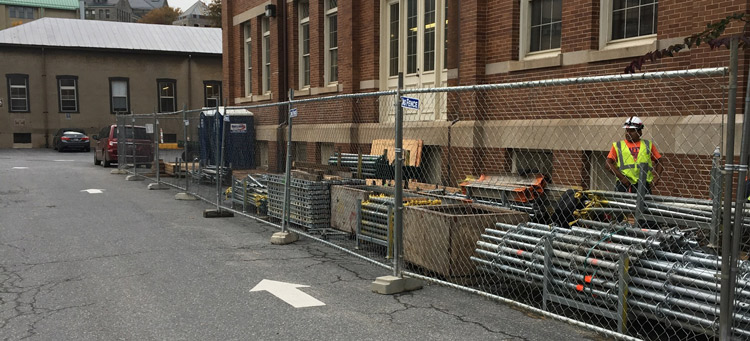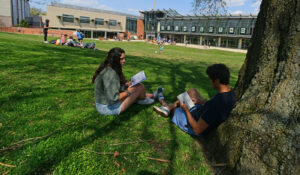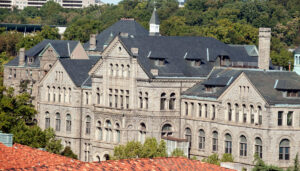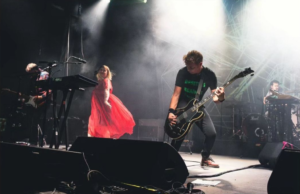Campus-wide Energy Project Now Underway

Construction can be seen by the Power Plant on campus, and will expand as the year goes on. Courtesy of cua.edu

Courtesy of cua.edu
By Katie Ward
If you’ve had to walk through a suspicious-looking cloud of steam coming from a ground grate, forego a shower because your residence hall’s water was shut off, or dive out of the path of a car speeding between Pangborn and Gowan, then be relieved to know that the University has planned out long-term solutions to these common campus problems.
The Catholic University Facilities Planning and Management Office hosted three information sessions this past month to inform students, faculty, and staff about a new energy project to be started in a few weeks. The project aims to replace heating and cooling systems in the University, reduce energy consumption, and better allow for future repairs and maintenance that will not disrupt campus life.
The project includes the installation of twelve new boilers into the Power Plant to replace the outdated energy system currently in use by the University, and the “construction of new underground piping that will distribute utilities to campus buildings”, according to the project announcement. It was estimated that this switch will reduce the University’s annual carbon emissions by 500 metric tons, which is a 17% overall decrease in annual natural gas use.
The first phase of the energy project is already underway, and is expected to be finished in June 2019. This plan includes Power Plant improvements and new piping to buildings on the south part of campus, up to and including Caldwell Hall. The second phase will install piping to buildings north and east of Caldwell, cycling back to the Power Plant by June 2020.
The whole project is designed in phases and sequences so as not to completely block the flow of traffic on roadways. Roads and parking lots, including Pangborn parking lot, Mullen Library parking lot, and the road in front of Leahy Hall, will all be temporarily closed for all or part of the project’s timeline.
Administrators and staff in some buildings, including Pangborn Hall, Hannan Hall, and the Pryzbyla Center, expressed worries that the construction and closed roadways would interfere with visitors and daily deliveries. Facilities Planning and Management representatives acknowledged that the construction would be a brief hindrance to the activities of daily campus life, but that this project would prevent the need for large-scale energy repair projects in the long run.
The energy plan is the first major step being taken to carry out the Master Plan published by the University in 2012. The repair of the energy system, as well as the great decrease of campus energy consumption, will eventually allow for smaller improvements like exchanging all the window air conditioning units in campus buildings with a centralized system.
The Facilities Planning and Management Office is also using this opportunity to achieve a smaller goal outlined in the Master Plan: improving pedestrian circulation in high traffic areas. In early December, the road in front of Pangborn Hall, leading from the Metrorail stop to the Mullen Library, will be permanently closed and replaced with a pedestrian walkway. Travelers who normally use this road when traveling east on Michigan Avenue to connect to John McCormack Road will have to use Harewood Road and Taylor Street to use an alternate route around campus.
Administrators at Catholic, while acknowledging the slight inconvenience of the road closures and construction on campus, are excited about the improvements that the energy project brings.
For more information on the energy project, click here.







